Chinese Urban Agriculture. walking down the street
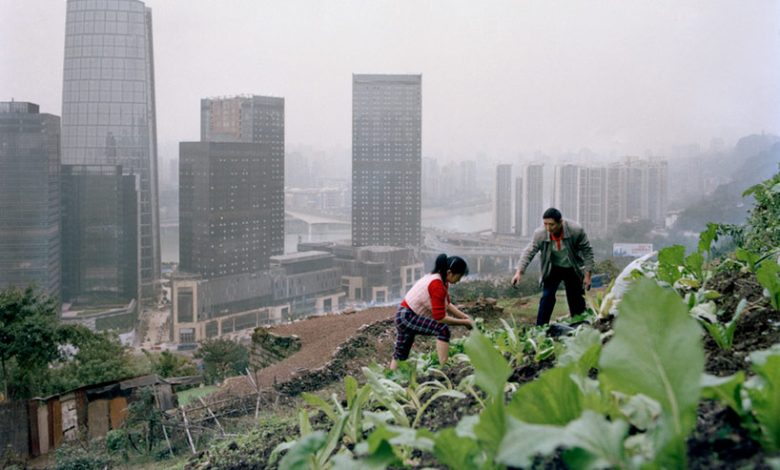
Very good to all Agrohuerters. As Lucía told you in her article: “ Looking for Urban Gardens in China: an adventure ”, it is becoming a complicated task to find Chinese urban agriculture in a city that is so different from the others, such as Beijing.
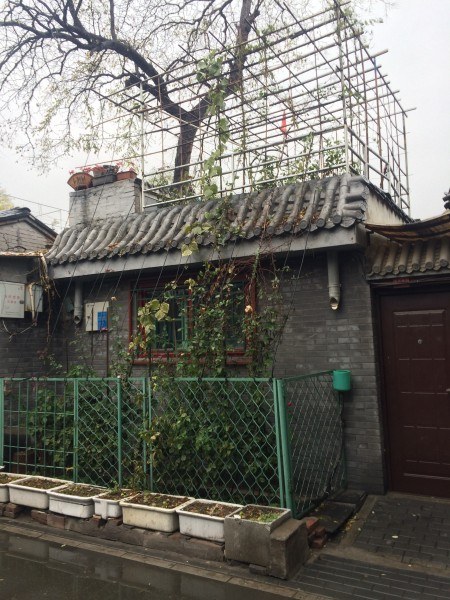
Our Chinese peers have a different concept of Chinese urban agriculture, basically because it is not a common thing to garden in empty spaces in the city by a community of Chinese gardeners.
This absence of community gardens means that, for them, Chinese urban agriculture is made up of pick-up farms, greenhouses in production near the city and different agricultural research centers where a large number of experiments are carried out on both vegetables and tree species. There are some community urban gardens, such as the Sanyuanli community garden, but it is not usual.
But from these experiences with Chinese urban agriculture we have learned a lot of new information and although learning about peri-urban farms is not our field of study, we have learned many management techniques and different concepts that we did not know before.
So to share with you these new experiences and leave you with curious data on Chinese urban agriculture, I leave you with this list of things that have caught my attention simply by walking around this city…
Chinese urban agriculture. Walking down the street.
To begin with, I always pay attention to what I see in the streets and the first thing that caught my attention were the parks, it is true that a park is not typical of Chinese urban agriculture, but it is still a necessary element for the urban naturation of the city and it is something that interests us:
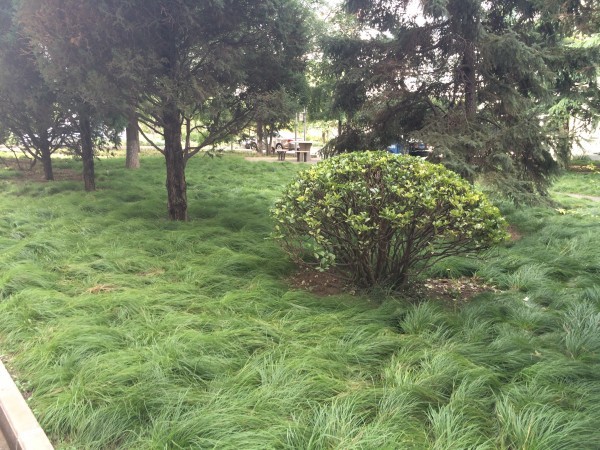
I have observed this type of park in several Chinese cities and it is constantly repeated along many streets and avenues in Beijing. As you can see, this grass is very long, shaggy and bushy, not as uniform and little grown as the one we are used to seeing in our parks.
The purpose of a lawn is to cover the ground and give it an aesthetic value. In Europe this is normally achieved by sowing the entire soil with different species of grasses or by buying the grass plates, not here. These bushes are planted individually already grown, like seedlings, in a certain planting framework. As the plants grow, they will sag due to their weight, covering the bare soil and achieving the desired effect with less seed and perhaps labor, the aesthetic effect is already a matter of taste.
If we continue walking through these parks or perhaps along a street we can see more curiosities of Chinese urban agriculture. If we look at some trees we can see these bags as if it were a sick person. Nothing further, it is an endotherapy treatment.

Since I don’t have much idea what this topic is about, I consulted with my friend Hugo, an agricultural engineer who has several courses on this topic. He told me that when the diseased tree can absorb the bag treatment by capillarity and differential gradient, but that bag system in Europe was not legal and endotherapy treatments are normally applied with a syringe.
When we change the season and we reach the Beijing winter, a very hard one by the way, the landscape changes completely and with it Chinese urban agriculture. The urban orchards in the city almost completely stop and the parks I was talking about are covered with tarps and plastic to protect the trees and bushes from snowfall:
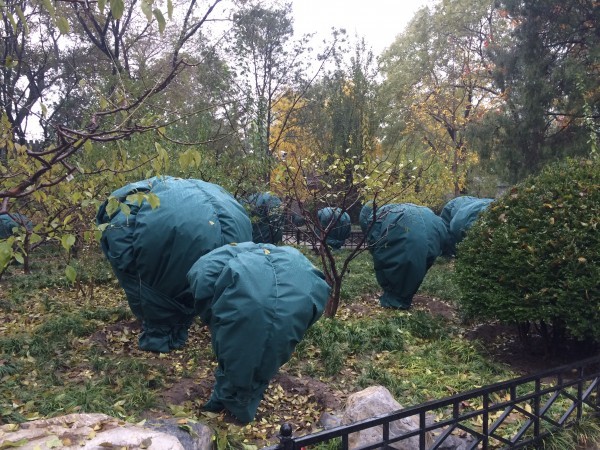
Also, walking through the streets of Beijing I have found the mythical gardens in the hutons, micro-gardens that I keep seeing every time I get lost there, different structures and models to take advantage of the space and different crops among which they stand out above all the chiles.
And last but not least, walking through some of the more monumental Hutons, I found the famous ornamental cabbage that I was telling you about a while ago. Another element of urban nature that is already part of many of our cities. A beautiful and practical crop that is also part of Chinese urban agriculture.
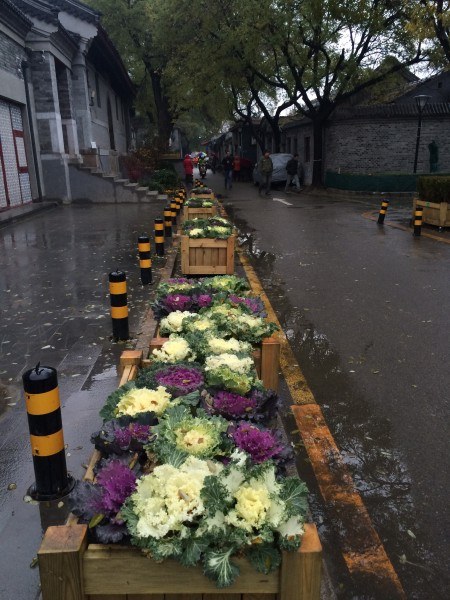
Chinese urban agriculture. Greenhouses and research centers.
Most of the places we have visited, thinking that it was Chinese urban agriculture, have been horticultural greenhouses with different production models or different research centers.
Central Cultural Leisure Park, is the last example of the greenhouses that we have visited, but in all of them we have been able to draw some positive conclusion.
We have also visited other greenhouses without organic production, where fertilizers, sulfur lamps, liquid nutrition, etc. abound… Something interesting from the point of view of production and research, but it is a type of agriculture that we do not practice.
In general, this experience learning about Chinese urban agriculture has been very positive, of course I keep all the elements of urban nature that you unintentionally find walking down the street, I hope I have conveyed to you a little the feeling of being here.
A strong greeting, see you soon

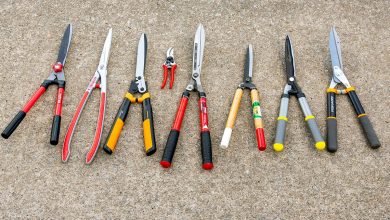
![Photo of Prune Geraniums: [Importance, Time, Tools, Considerations and Steps]](https://www.complete-gardening.com/wp-content/uploads/2022/08/prune-geraniums-importance-time-tools-considerations-and-steps-390x220.jpg)
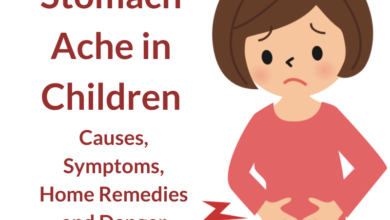
![Photo of Hydrangeas Care: [Soil, Humidity, Pruning and Problems]](https://www.complete-gardening.com/wp-content/uploads/2022/08/hydrangeas-care-soil-humidity-pruning-and-problems-390x220.png)